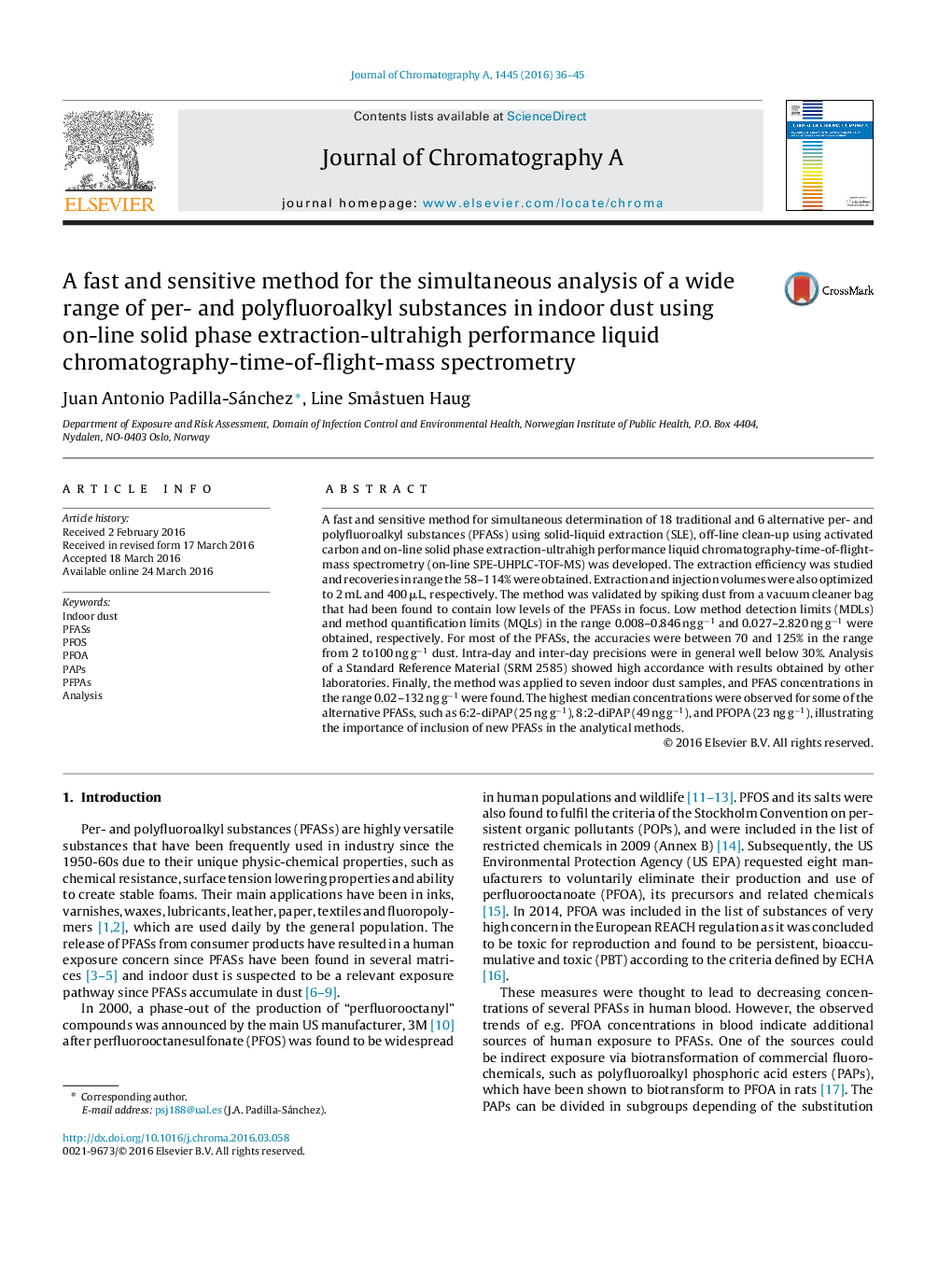| Article ID | Journal | Published Year | Pages | File Type |
|---|---|---|---|---|
| 1200350 | Journal of Chromatography A | 2016 | 10 Pages |
•A fast and sensitive method for the analysis of PFASs in indoor dust was developed.•The method covered simultaneous analysis of traditional and alternative PFASs.•The extraction and injection volume were optimized to increase the sensitivity.•The method was successfully applied to real indoor dust samples from Norway.
A fast and sensitive method for simultaneous determination of 18 traditional and 6 alternative per- and polyfluoroalkyl substances (PFASs) using solid-liquid extraction (SLE), off-line clean-up using activated carbon and on-line solid phase extraction-ultrahigh performance liquid chromatography-time-of-flight-mass spectrometry (on-line SPE-UHPLC-TOF-MS) was developed. The extraction efficiency was studied and recoveries in range the 58–114% were obtained. Extraction and injection volumes were also optimized to 2 mL and 400 μL, respectively. The method was validated by spiking dust from a vacuum cleaner bag that had been found to contain low levels of the PFASs in focus. Low method detection limits (MDLs) and method quantification limits (MQLs) in the range 0.008–0.846 ng g−1 and 0.027–2.820 ng g−1 were obtained, respectively. For most of the PFASs, the accuracies were between 70 and 125% in the range from 2 to100 ng g−1 dust. Intra-day and inter-day precisions were in general well below 30%. Analysis of a Standard Reference Material (SRM 2585) showed high accordance with results obtained by other laboratories. Finally, the method was applied to seven indoor dust samples, and PFAS concentrations in the range 0.02–132 ng g−1 were found. The highest median concentrations were observed for some of the alternative PFASs, such as 6:2-diPAP (25 ng g−1), 8:2-diPAP (49 ng g−1), and PFOPA (23 ng g−1), illustrating the importance of inclusion of new PFASs in the analytical methods.
